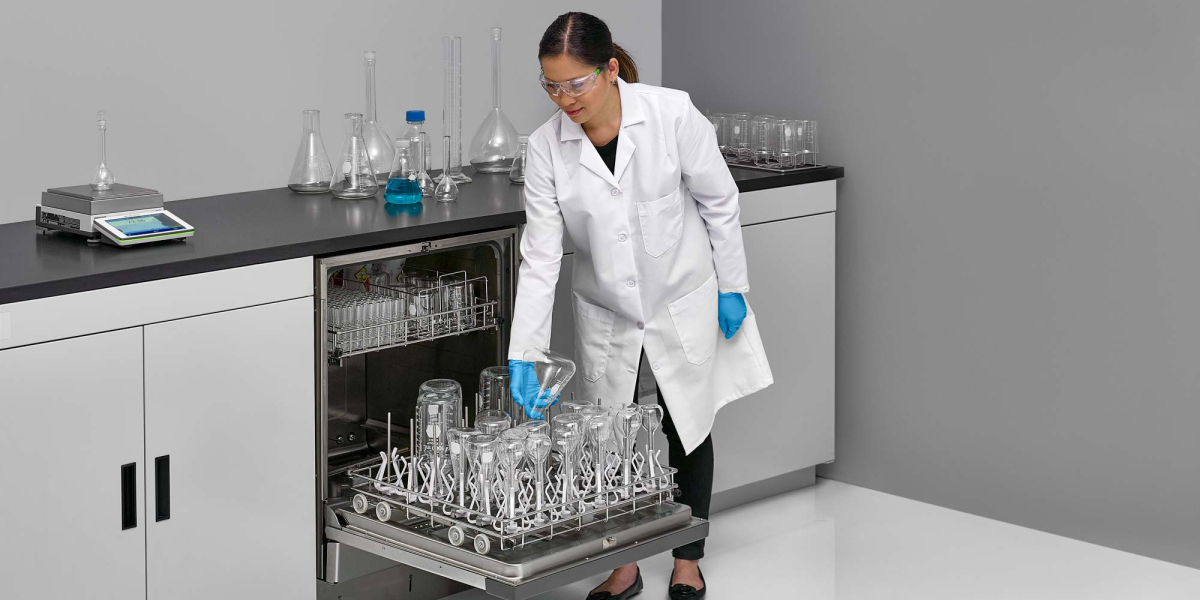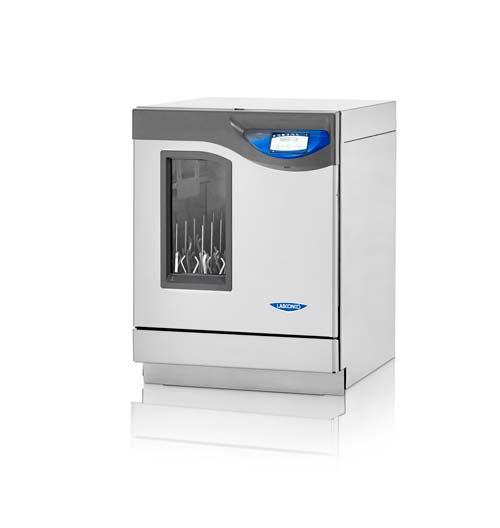Choosing the right glassware washer

Whether purchasing a new laboratory glassware washer or looking to replace an older model, there are five important questions to ask yourself before choosing one.
- What are your laboratory’s specific needs?
- Are there specific performance measures needing to be met?
- Does the glassware washer form and function lend itself to maximum cleanability?
- What are your budgetary constraints?
- What resources do you put a premium on?
- What conservation features does the glassware washer offer?
Here are some helpful tips and guidelines when sifting through all the glassware options.

What are your laboratory’s specific needs?
The laboratory environment is a dynamic, fast paced setting. Standard operating procedures (SOP) can change drastically within a relatively short amount of time. It is important to assess a glassware washer’s ability to provide versatile options so end users can respond appropriately to those changes. Labconco’s line of glassware washers incorporate versatile interchangeable racks, to accommodate labware needed to complete a variety of essential laboratory processes. Not to mention all the standard and spindle rack accessories that can help clean specialized labware like volumetric pipettes, graduated cylinders, or specialty bottles. Being constructed of 304 stainless steel, end users can also be confident that our racks and accessories with will stand the test of time.
Are there specific performance measures needing to be met?
Additionally, be aware of any performance requirements such as maximum wash temperature, number of wash cycles, or single phase vs three phase heating. Labconco’s new glassware washers all reach 93° C (199° F) and can be configured to include single or three phase heating in decrease dry times as well. When specialized SOPs or workflows demand high performance to ensure maximum cleanability of labware, Labconco can help produce and capture consistent results day in and day out.
Does the glassware washer form and function lend itself to maximum cleanability?
Is the washer more than the sum of its parts? The overall goal of a glassware washer is to provide reliably clean glassware; however, it is important to understand how those components are manufactured and assembled. Glassware washer should consist of mostly 304 type stainless steel because it can resist the harsh laboratory environment. Because of the required wash and dry temperatures, plastic components will not stand the test of time. This will result in increased downtime and maintenance costs. The most reliable manufacturers should offer a 2-year warranty on parts and service, a sign of quality and durability.
What are your budgetary constraints?
It is always important to be aware of your laboratory’s budget. Laboratory glassware washer can bear a heavy price tag, so knowing how long with last is important. It is important to not fall into the trap of using a cheap, underpowered residential washer. Not only are residential washers engineered to ceramic dishes, they often are made of inferior components. Additionally, the temperature needed to successfully clean labware is not obtainable in a residential unit. Finally, residential units will consist of a single pump the wash and drain steps. This greatly increases the potential to cross contaminate labware, increasing resource consumption. Labconco has you covered, featuring powerful separate wash and drain pumps, our redesigned glassware washer help lower the potential of cross contamination and residual carry-over.
What resources do you put a premium on?
Automating this messy, unwanted task frees up valuable time so laboratory professionals can focus on what is important. Purchasing a new glassware washer also decreases the amount of energy wasted on handwashing glassware. More importantly, this also decreases the risk of potentially serious laceration sustained in the workplace due to broken glass labware. By selecting the right glassware washer for your laboratory, precious resources such as time, effort, and safety, are not wasted.
What conservation features does the glassware washer offer?
Always consider energy cost and water conservation when selecting a glassware washer. Laboratories and the people in them are trying to be more environmentally responsible, and your laboratory glassware washer can aid in that pursuit. Hand washing 30 pieces of labware takes about 20 gallons of tap water (EPA Water Trivia Facts). A good glassware washer should use less than 13 gallons of water to wash the same amount of labware. This translates into saving of about 1,664 gallons of water per year. SteamScrubber, FlaskScrubber, and FlaskScrubber Vantage can be set to delay start to wash during off-peak hours when energy costs can be lower. You could see up to 50% savings in energy costs annually. Finally, Labconco’s glassware washers are made of 51% recycled material and 77.6% of the washer can be recycled.
By asking yourself the above six questions, a picture of the glassware washer that best suits your laboratory should emerge. Versatility to adapt to ever-changing procedures and protocols. Reliability and confidence that the glasswasher can withstand the rigors of our laboratory. Efficiency to help maximize cleanability. Labconco has a solution for you. Let us clean, so you don’t have to.
Quickly find out how much you could save using an efficient glassware washer.
| chevron_left | Top 5 glassware washing accessories for a successful laboratory | Articles | The Right Fume Hoods: The Building Blocks of Zero Net Energy (ZNE) Lab Design | chevron_right |






